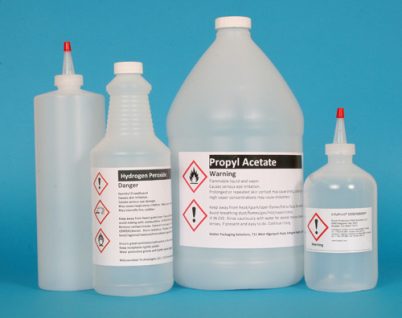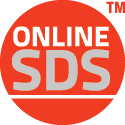Unlocking the Future of GHS Safety: What to Expect Next

In summary:
- OSHA updated the version of the Global Harmonized System they are using (Revision 7) as of mid-2024, but you should expect this to change in the future
- You need to ensure that you continue to train your teams on new or changed hazards and update your HazCom processes to match
- Prioritize your high-volume substances and schedule staged SDS reviews to ensure that your documents, labeling, and inventory are up-to-date whenever this occurs
People engaged with substance policies, such as Environmental, Health, and Safety (EHS) leaders, want to ensure that GHS safety changes are clearly communicated. They, along with OSHA, then expect businesses to update their internal processes and labels accordingly.
Below, we discuss how GHS compliance innovations, such as the use of cloud-based systems, can help you stay ahead of emerging safety technologies. Stay current with evolving OSHA HazCom standards and manage your Safety Data Sheets (SDS) with ease.
Read on to discover why the easiest way to stay ahead of these GHS safety trends is to adopt a digital-first strategy. With electronic SDS access and updating processes, you can ensure that you stay up-to-date with any safety regulation changes.
Is GHS the Law?
The Globally Harmonized System (GHS) is a regulatory model set by the United Nations, rather than a law. Countries that adopt the GHS can more easily communicate the existence of hazardous materials within their shared industries.
While the GHS regulatory details may differ by revision, they provide a set of steps to help individuals stay up-to-date with the most recent standards.
When a local authority, such as the United States, adopts the GHS in its own regulations, it establishes a minimum standard for HazCom regulations. OSHA uses these, as well as its own requirements, to establish a comprehensive set of standards.
Who Requires GHS Labels?
Any manufacturer or importer must ensure that they classify any hazardous substances they use or produce and use compliant labels to clarify the contents of any containers. As these are shipped, labels and safety data sheets (SDS) must accompany the shipment.
Upcoming GHS Safety Trends
For now, the Federal Register lists the most recent Hazard Communication Standards (HCS). However, regulations continue to evolve in response to ongoing needs, with different jurisdictions updating their adoption at varying rates.
These days, the easiest way to ensure you are up-to-date is to use a digital form of SDS delivery, as well as an online, cloud-based system, to ensure that all employees always have access to the latest versions of SDS documents.
The most recent major update occurred in 2024, which brought the HCS into parity with the GHS Revision 7. However, as the GHS has now reached Revision 11, you should utilize every advantage possible to stay ahead.
Safety Regulation Changes on the Horizon
If you are currently producing substances or products for the EU, it is essential to be aware that they have recently introduced new hazard classes. When you produce SDS for these, they must follow GHS safety standards to ensure that the recipients fully understand the nature of what has been shipped.
As of May 1, 2025, any new substances that match these categories must be shipped labeled as meeting these classes. By November 1, 2026, existing substances on the market must have their labels updated.
By May 1, 2026, any mixtures that include these substances must be updated, and by May 1, 2028, you must also update the labeling of existing mixtures.
Frequently Asked GHS Safety Questions
Is GHS the Same as WHMIS and CLP?
No, they are not.
The Globally Harmonized System (GHS) is a United Nations model of safety standards. It informs other countries of a minimum set of requirements for their own local safety regulations.
Workplace Hazardous Materials Information System (WHMIS) is Canada’s implementation as a part of its hazardous products regulations (HPR)
Whereas the Classification, Labelling and Packaging Regulation (CLP) is the European Union’s implementation.
Countries that sign up to these standards can add more requirements or nuances on top of the GHS. However, the floor of quality is that of the GHS itself. For example, in the United States, training requirements and other details are set by the OSHA.
What Training is Needed for GHS?
OSHA requires training in its own OSHA standards, including understanding things like:
- Labeling
- SDS training
- Detection methods
- Protective measures
Any training that occurs must be presented in a manner that is understandable to the worker’s language and literacy level. If someone cannot understand, then you must adjust your training appropriately.
You should also retrain when a new chemical or hazard classification is introduced to your workplace, to ensure that nobody finds themselves in a situation where they do not understand what they are interacting with.
What Are GHS Safety Words?
The GHS details various hazard labels that employers and suppliers must use on containers when storing or shipping substances. Some of these include what it describes as “signal words“, which are:
- Danger: Severe hazard categories
- Warning: Less severe hazard categories
In general, “Danger” is used for things that are fatal, toxic, flammable, damaging to the body, or explosive. “Warning” may be an irritant or mildly harmful. However, these are set by specific regulatory tables, not used ad hoc.
While words like “Caution”, “Notice”, or “Poison” may exist on legacy labels, these are not GHS signal words and may have been improperly added to newer labels.
Be Ready to Update Your Systems
While GHS safety standards may be updated at any time, and OSHA regulations with them, there will typically be a grace period in which to make changes. During that time, you will need to update all relevant documents. However, it will be much easier to do that if you use a cloud-based system with digital access.
If you would like to know how to do that, please get in contact with KHA. We can help you streamline every step in your compliance process.
With mobile SDS access, for example, as well as offline access to documents, our Online-SDS system gives you a simple way to stay ahead of the game.
